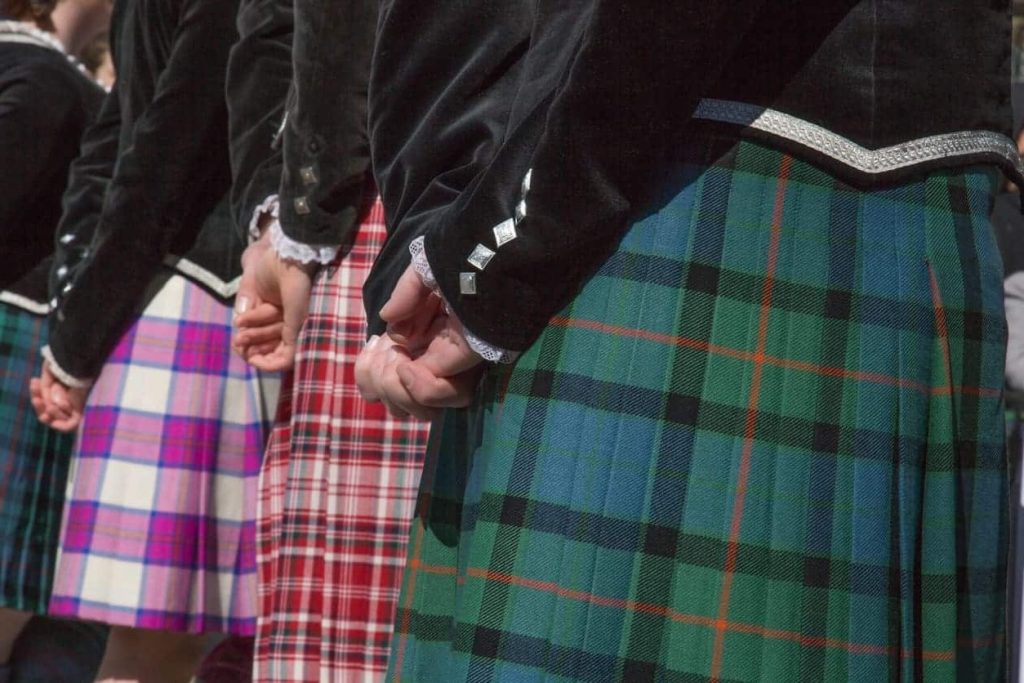Imagine stepping into a world where vibrant patterns and rich traditions paint a vivid picture of cultural pride and historical significance. National Tartan Day does just that, inviting us on a journey to celebrate the Scottish heritage that has woven its way into the very fabric of societies across the globe, especially in North America. This annual observance, held on April 6, isn't just about donning the iconic tartan; it's a heartfelt tribute to the indomitable spirit of the Scots and their monumental contributions throughout history. From the Declaration of Arbroath in 1320, a bold assertion of Scotland's independence, to the modern-day festivities that include parades and cultural festivals, National Tartan Day stands as a testament to the enduring legacy and influence of Scottish culture. But why do we celebrate it, and how did this tradition find its roots in places far from Scotland's rugged landscapes? Join us as we unravel the threads of this fascinating story, a colorful blend of history, identity, and pride that resonates with Scots and admirers alike, wherever they may call home.
Key Takeaway
Timeline
Day Activities
-
Parades Galore: On National Tartan Day, streets come alive with the sound of bagpipes and the sight of kilts. Parades are a staple, showcasing Scottish clans in their vibrant tartans. Marchers often include pipe bands, dancers, and folks decked out in traditional Scottish attire, turning the event into a visual and auditory feast.
-
Cultural Festivals: Beyond the parades, cultural festivals take center stage, offering a deep dive into Scottish heritage. Attendees can expect everything from Scottish music performances, traditional dances, to storytelling sessions. These festivals serve up a hearty helping of Scotland's rich traditions, ensuring there's something for everyone to enjoy.
-
Wearing of Tartan: Encouraging the donning of tartan, this day sees folks wearing this emblematic fabric in various forms, from kilts to scarves. It's a powerful way to express pride in Scottish ancestry or simply to partake in the celebrations. Schools and workplaces often join in, making tartan the day's unofficial uniform.
Interesting Facts
1. Origins in Canada
National Tartan Day was first recognized in Canada in 1996, celebrating Scottish heritage.
2. Declaration of Arbroath Anniversary
The date, April 6, marks the Declaration of Arbroath in 1320, asserting Scotland's independence.
3. Global Celebration
Beyond Canada, National Tartan Day is celebrated in countries with significant Scottish populations.
4. Tartan: A Symbol of Identity
Tartans, with their unique patterns, represent Scottish clans and heritage on National Tartan Day.
5. Cultural Festivities
Parades and cultural festivals mark the celebration of National Tartan Day worldwide.
Why We Love This Day
-
Celebrating Scottish Heritage
Who doesn't love a day dedicated to celebrating the rich tapestry of Scottish culture? National Tartan Day, observed on April 6, is a vibrant homage to Scotland's enduring legacy, from its captivating history to the iconic tartan pattern that has become synonymous with Scottish identity. This day isn't just about donning plaid; it's a heartfelt nod to the contributions Scots have made across the globe, especially in places like North America and Australia. Whether through stirring music, compelling literature, or simply the spirited wear of tartan, this day unites folks in appreciating the depth and diversity of Scottish traditions. -
Commemorating the Declaration of Arbroath
Alright, let's take a quick trip back to 1320. On this very day, Scottish nobles were busy putting pen to parchment, drafting the Declaration of Arbroath. This wasn't just any old document; it was a bold statement of Scotland's independence from England. Fast forward to today, and April 6 has taken on a whole new level of significance as National Tartan Day. It's a time to reflect on Scotland's fight for sovereignty and how these historical moments have shaped the proud, resilient spirit of the Scottish people. Plus, it's a fantastic excuse to dive into some fascinating history lessons that are anything but dull. -
Uniting Communities
Let's face it, in today's hustle and bustle, finding moments that bring us together is something special. National Tartan Day does just that, bridging the gap between generations and cultures. It's not only for those with Scottish roots; anyone can join in the festivities. From lively parades and cultural festivals to the simple act of wearing tartan, this day is a powerful reminder of the importance of celebrating our diverse heritages. It's about more than just having a good time; it's a chance to honor the mosaic of traditions that enrich our global community.
Past & Future Dates
| Month | Day | Year |
|---|---|---|
| APRIL | 6 | 2022 |
| APRIL | 6 | 2023 |
| APRIL | 6 | 2024 |
| APRIL | 6 | 2025 |
| APRIL | 6 | 2026 |
| APRIL | 6 | 2027 |
| APRIL | 6 | 2028 |
FAQ
What holiday is April 6th in Scottish?
Tartan Day is celebrated on April 6th every year to commemorate the signing of the Declaration of Arbroath in 1320. This document was a letter sent by Scottish nobles to Pope John XXII, declaring Scotland's independence from England.
What is National Tartan Day and why is it celebrated?
Tartan Day is a North American celebration of Scottish heritage on April 6, the date on which the Declaration of Arbroath was signed in 1320. It originated in Canada in the mid-1980s. It spread to other communities of the Scottish diaspora in the 1990s.
What does Tartan Day honor?
Tartan Day is celebration of Scottish heritage and the cultural contributions of Scottish and Scottish-diaspora figures of history. The name refers to tartan, a patterned woollen cloth associated with Scotland. The event originated in Nova Scotia, Canada, in 1987.
What to wear on Tartan Day?
On Tartant Day, it's customary to wear tartan clothing or accessories to celebrate Scottish heritage. Popular choices include kilts, tartan scarves, shirts, or skirts, but feel free to get creative and incorporate tartan into your outfit in any way that feels comfortable and festive.
